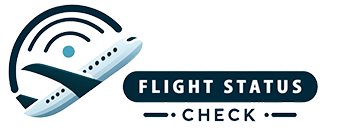The history of flight has always been one of innovation, excitement, and progress. And in the modern era, the ability to track and monitor flights has become an essential part of air travel. One of the most important aspects of this process is the ability to check the status of a particular flight, and in recent years, the development of technology has made it easier than ever to do so. In this article, we’ll take a closer look at the history of flight tracking, the current state of the art, and the future of this essential aspect of air travel.
Flight tracking has its roots in the early days of aviation, when pilots and air traffic controllers relied on radio communication and ground-based radar to keep tabs on aircraft. As technology advanced, so too did the ability to track flights in real-time. Today, passengers can check the status of their flight using a variety of methods, from airline websites and mobile apps to third-party flight tracking services.
One of the most important advancements in flight tracking technology has been the development of Automatic Dependent Surveillance–Broadcast (ADS–B). This system uses GPS technology to track aircraft in real-time, providing a more accurate and reliable method of flight tracking than traditional radar-based systems. ADS-B has become the standard for flight tracking in many parts of the world, and its widespread adoption has made it easier than ever for passengers to check the status of their flights.
In addition to providing real-time tracking information, ADS-B has also led to the development of new tools and services that make it easier for passengers to stay informed about their flights. For example, many airlines now offer mobile apps that allow passengers to track their flight in real-time, receive updates on delays or cancellations, and even monitor their baggage as it makes its way through the airport. These advances have made it easier than ever for passengers to stay informed about their travel plans, and have helped to reduce some of the stress and uncertainty that can come with air travel.
Despite these advancements, there are still challenges facing the flight tracking industry. One of the most significant is the need for greater interoperability between different tracking systems. While ADS-B has become the standard in many parts of the world, there are still areas where traditional radar-based systems are in use. This can lead to gaps in coverage and make it more difficult to track flights in certain regions. There is also the issue of privacy and security, as the ability to track flights in real-time has raised concerns about the potential for misuse of this information.
Looking to the future, the development of new technologies such as satellite-based tracking and artificial intelligence has the potential to further revolutionize the flight tracking industry. Satellite-based tracking has the potential to provide global coverage, making it easier than ever to track flights no matter where they are. Meanwhile, advances in artificial intelligence have the potential to improve the accuracy and reliability of flight tracking systems, and could even lead to the development of new tools that make it easier for passengers to stay informed about their flights.
In conclusion, the ability to track and monitor flights has become an essential part of air travel, and the development of new technologies has revolutionized the way we stay informed about our flights. From the early days of radio communication to the widespread adoption of ADS-B, flight tracking has come a long way, and the future looks even more exciting. With continued advancements in technology, we can expect flight tracking to become more accurate, reliable, and accessible, making it easier than ever for passengers to stay informed about their travel plans.

Leave a Reply